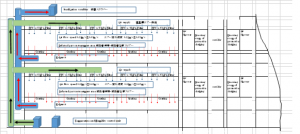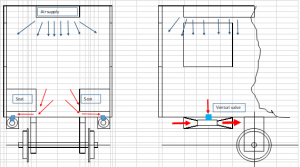For fine particles・Infection control
We posted about tiny particles in our Blog on March 15, 2020.
The particles are floating in the air, but if there is an air flow (wind speed) of 0.11 m / s or more, they will move along with that flow. The particles will not re-float once attached anything. The adhered particles move only due to physical force, such as contact with hands, etc.
What about the building we are using or the train? If the air flow is less than 0.11 m / s and you are indoors in the same room as the infected person, the length of time the virus is alive will be as affected as a droplet infection. Up-flow occurs because the exhaust port is on the ceiling inside the train. If an infected person is on board and has a cough and is sprayed, all passengers will be exposed to the particles. The Social distance of 2 meters is a case of direct splash infection, and I think that it should be taken into consideration that fine particles are floated in a place where there is no air flow. This is a proposal example of a building that heals an infected person who does not have an up flow that prevents exposure to particulates inside the building.
 |
A typical example of high risk is a vehicle. In this example, a unit that can use the Venturi effect is attached to the bottom of the train and it is discharged when running. The exhaust air does not influence to outside, because there are nothing within 2 meter. The door is open when the train is stopped. I would like to propose a new vehicle for particle protection. We would appreciate it if you can read it together with the blog on March 15.
 |
The end of document
